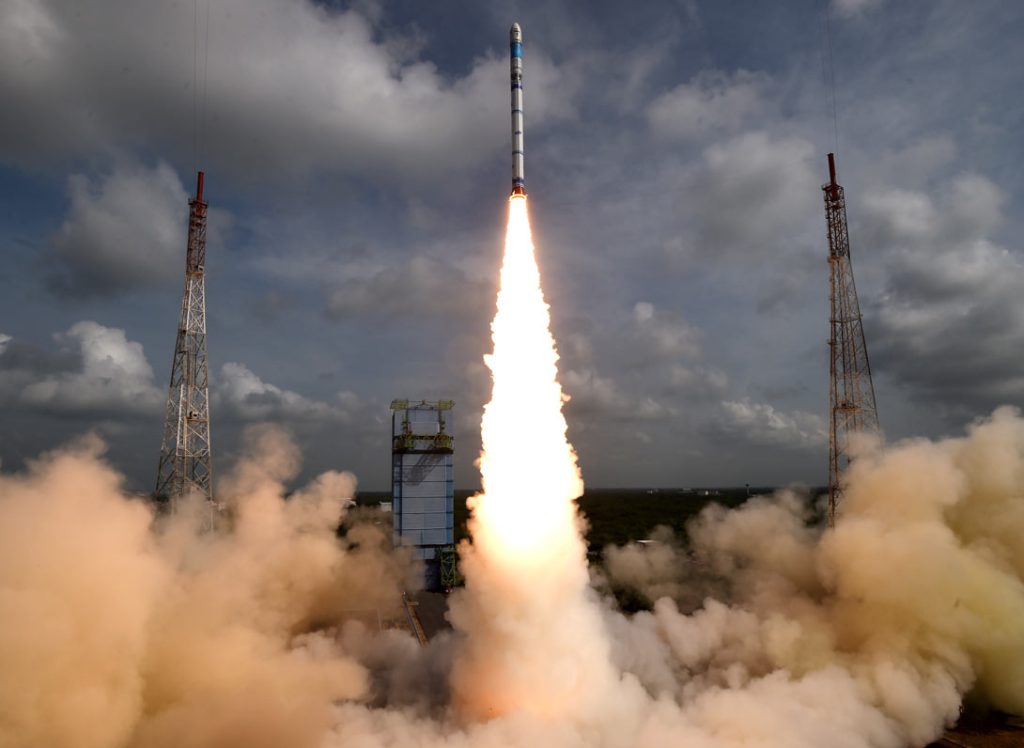The Indian Space Research Organisation (ISRO) successfully launched the Small Satellite Launch Vehicle (SSLV) on its third developmental flight, SSLV-D3, from the Satish Dhawan Space Centre in Sriharikota on August 16, 2024.

The Mission
The SSLV-D3 carried the Earth Observation Satellite-8 (EOS-08), weighing approximately 175.5 kg, into a circular low Earth orbit at an altitude of 475 km.
The EOS-08 is equipped with advanced payloads such as –
- Electro-Optical Infrared Payload (EOIR): Designed for capturing images in the Mid-Wave IR (MIR) and Long-Wave IR (LWIR) bands, this payload will enhance satellite-based surveillance, disaster monitoring, and environmental studies.
- Global Navigation Satellite System-Reflectometry payload (GNSS-R): This will aid in Earth and atmospheric monitoring and provide data for scientific research.
- SiC UV Dosimeter: Aimed at monitoring UV irradiance for the Gaganyaan mission, India’s ambitious human spaceflight program, and serving as a high-dose alarm sensor for UV radiation.
The significance of the current launch
The successful deployment of EOS-08 not only completes the SSLV’s developmental phase but also signifies ISRO’s commitment to innovation in space technology.
This launch was particularly crucial following the SSLV’s mixed history. Although its first flight failed to achieve orbit, the subsequent SSLV-D2 mission in February 2023 was a success.
The SSLV, known for its low cost, quick assembly, and flexibility in accommodating multiple satellites, positions India as a competitive player in the global small satellite launch market.
With the SSLV now ready for commercial operations, NewSpace India Limited (NSIL) is gearing up for its first dedicated commercial launch in 2026, which will deploy the Optimus satellite.